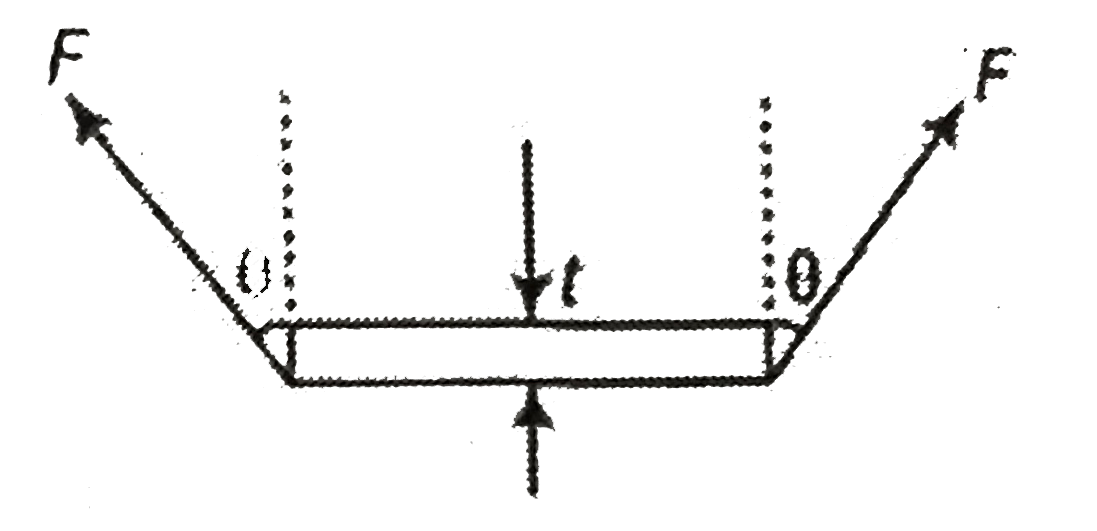The radius of the biggest metal coin of thickness t and density ρ which would be able to float on water surface of surface of water is ρ
A
S2ρgt
B
Sρgt
C
2Sρgt
D
4S3ρgt
Video Solution
Text Solution
(c) For the biggest coin, the force due to surface tension shall be vertical (i.e.θ=0)
∴ Upward force exerted on the coin at the verge of its sinking
F=(S)×(2πr) (r=radius of coin)
Now, " " F=weight of coin
∴ S×2πr=πt2τ×ρg⇒r=2Sρgt

|
Topper's Solved these Questions
- FLUID MECHANICSBOOK - BITSAT GUIDECHAPTER - FLUID MECHANICSEXERCISE - BITSAT Achives
15 Videos
- ELECTROMAGNETIC INDUCTIONBOOK - BITSAT GUIDECHAPTER - ELECTROMAGNETIC INDUCTIONEXERCISE - All Questions
33 Videos
- GAUSS LAW AND ELECTRIC POTENTIAL THEORYBOOK - BITSAT GUIDECHAPTER - GAUSS LAW AND ELECTRIC POTENTIAL THEORYEXERCISE - BITSTAT ARCHIVES
4 Videos
Similar Questions
Knowledge Check
What is the radius of the biggest aluminium coin of thickness t and density ρ, which will still be able to that on the water surface of surface tension S ?
A4S3ρgtB3S4ρgtC2SρgtDSρgtMicroscopicorganism which passively float on the surfac of water is called
APhytoplantonsBZooplantonesCa &b bothDNone of theseRadius of the earth is R and the mean density is ρ. Find out the gravitational potential at the earth's surface
A−43πGρR2B−2πGρR2C−13πGρR2D−23πGρR2
Water hyacinth floats on water surface. Explain.
View SolutionWater hyacinth floats on water surface. Explain.
View Solution_E01_235_Q01.png)
A cube with mass m completely wettable by water floats on the surface of water each side of the cube is a what is the distance h between the lower face of cube and the surface of the water if surafce tension is S. Take densities of water as ρw take angle of contact is zero.
View SolutionA needle of length l and density ρ will float on a liquid of surface tension σ if its radius r is less than or equal to:
View SolutionA hollow sphere of external radius R and thickness t(<<R) is made of a metal of density ρ. The sphere will float in water if (Take density of water = 1 g cm−3 )
View Solution
